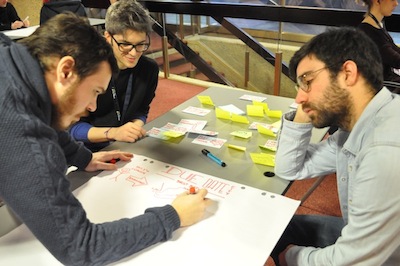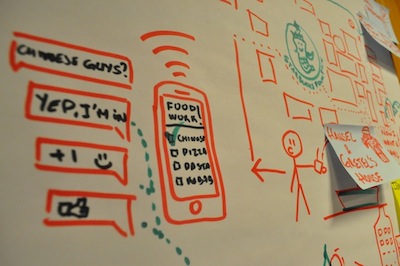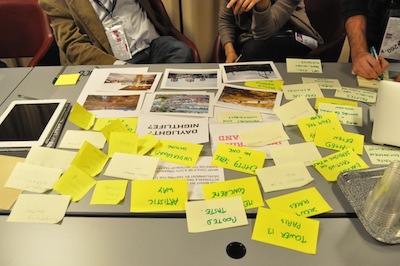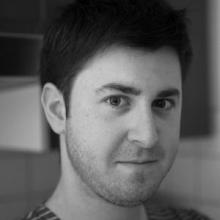Workshop description: We hear a lot about smart cities lately, the sensors embedded in the public spaces can emulate the human senses to perceive the reality and to monitor the urban activity. All the human senses have now their own urban analog counterpart, except one, the taste. What does it mean to taste the city? How might we uncover useful insights for urban development by tasting the city? What could be a city organized and based around the notion of taste?
Highlights and takeaways:
A CALL FOR SENSORS
When the participants started to work on the question of “tasting the city”, a first dilemma quickly raised up: were we talking about the city tasting itself, the city tasting us or us tasting the city? The whole challenge had been to find the right combination between sensors and senses. Most of the services defined during the workshop used citizens as mobile sensors embed in the streets. We also gathered interesting insights about one of our hypothesis: the notion taste in the city is definitely related to feeding habits.

TASTE, AS A NEW WAY TO EVALUATE URBAN ENVIRONMENT
Some of the participants came up with a very interesting analog situation: both for taste and urban perception, there are as many different appreciations as people. One of the service designed by participants qualified public places in the city by a taste attribute: salty, sweet, bitter, etc… Evaluate the perception of an urban environment can be something quite complicated, then taste can help people to qualify their feelings in a different way. Tasting urban environment has been also envisaged through the metaphor of materials as ingredients. Taste could become a crowdsourcing tool to identify and to qualify the components of urban environment and could help to recycle materials. This part of the workshop raised some really interesting discussions about the link between taste and culture.

TASTE, AS A TOOL TO RENEW UNDESIRABLE PLACES
One of the groups worked on tasting the industrial wastelands, leading to interesting insights on one of the most undesirable place of the city. Industrial wastelands had been defined as places with a faded taste. As they are empty spaces, they offer interesting specifications such as silence or no marked identity. These particularities make them the perfect places to amplify the taste sensation, places working as a sound box. Inspired by this metaphor, one group of participants imagined a concept of anti-touristic meetings based on these dark faces of the city. They reinvested empty spaces in order to create hotspots for taste-based events, amplified by the tasteless aspects of industrial wastelands.

TASTE, AS A URBAN PLANNING TOOL
From a prospective point of view, another group envisioned what could be an entire city based on taste, the Due Date City. One of the most provocative thought had been to get inspired by Grimm Brothers’ Hansel & Gretel and to bring edible buildings into the streets. These infrastructures had to be eaten before they become obsolete. If not, instead of rotting, edible buildings are slowly digested by bacteria until their complete disappearance. Digestion is an interesting process for urban energy: it could allow to produce electroluminescence that could light streets. On another hand, food brands could sponsored urban equipment such as a Starbucks Fountain in the middle of the main square of the city, offering latte macchiato every morning. In fact, the whole city had been reorganized according to the rhythms of meals and new rules of urbanism gave each district a unique flavor. Going from a district to another was also the occasion to recreate the displacement experience: olfactory breadcrumbs are both useful for a precise navigation or urban drifting.
Wrapping it up, it has been quite an interesting premiere with a lot of crazy-but-right ideas and intriguing opportunities for a nascent new form of intervention: urban interaction design.
See the workshop main outlines here on Storify.





